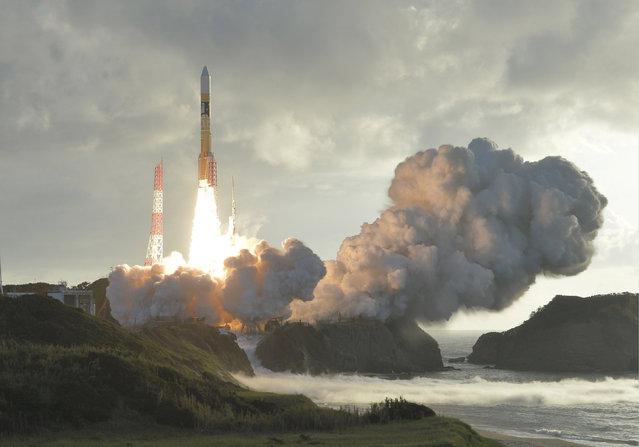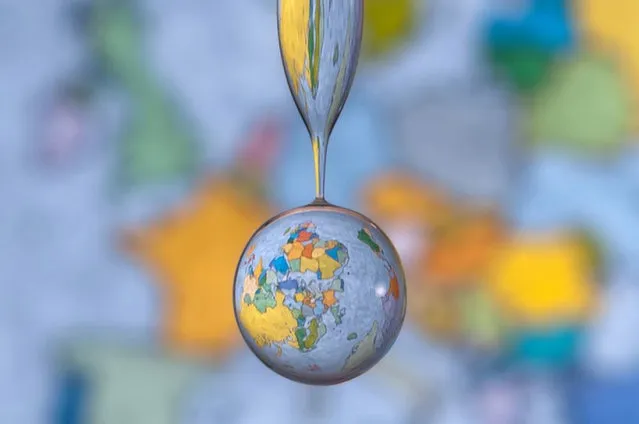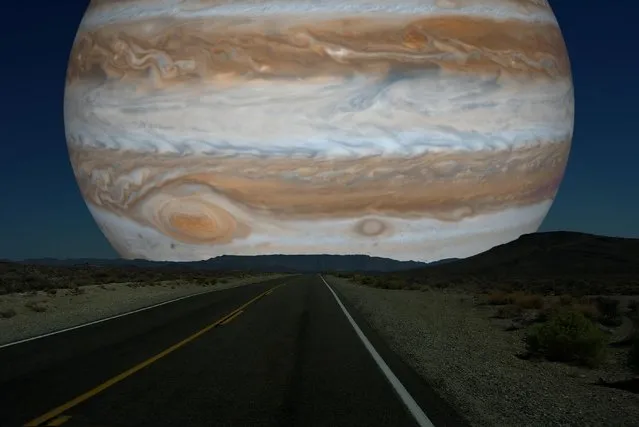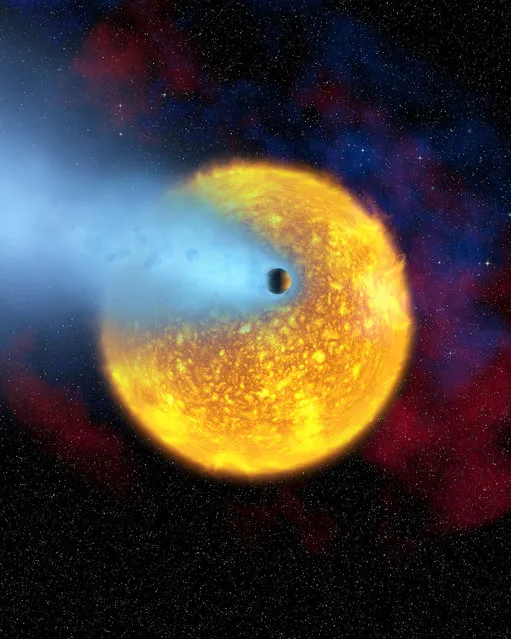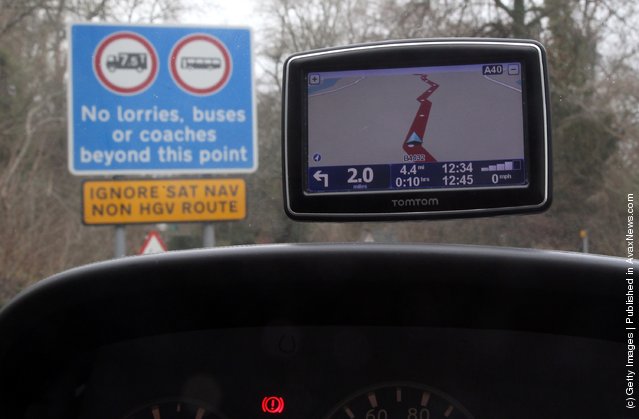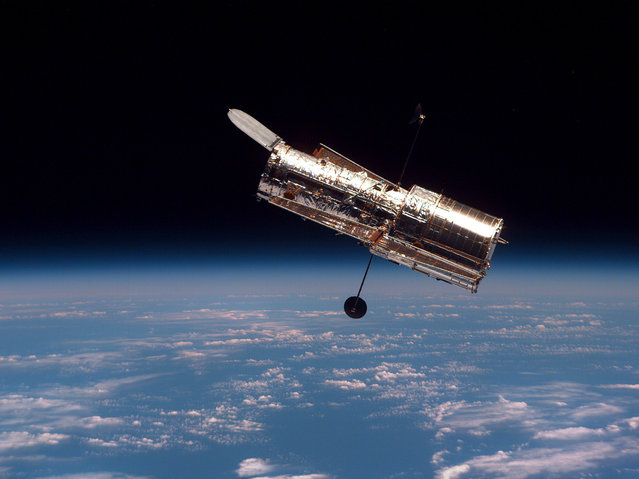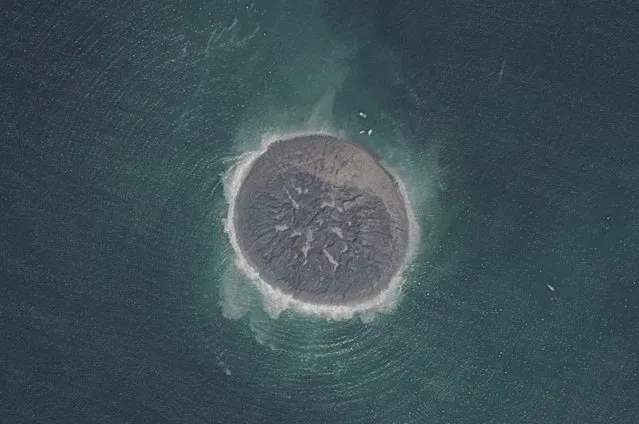
Kenya Wildlife Service and Save The Elephants staff push an elephant as they undertake the collaring of ten elephants ranging near the Standard Gauge Railway to fit them with advanced satellite radio tracking collars in Tsavo National Park, Kenya March 15, 2016. (Photo by Goran Tomasevic/Reuters)
17 Mar 2016 15:28:00,post received
0 comments

